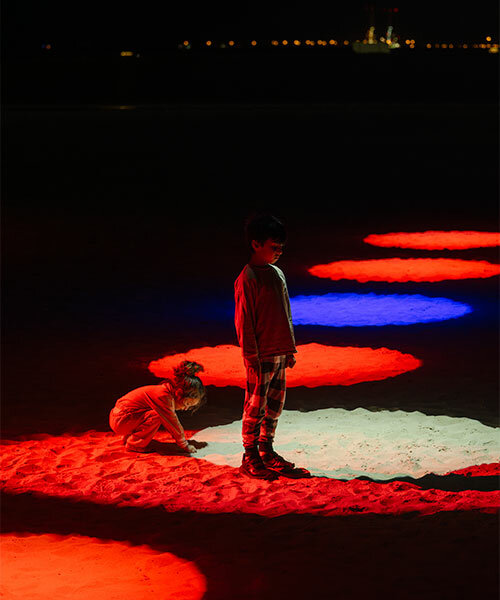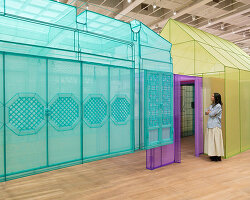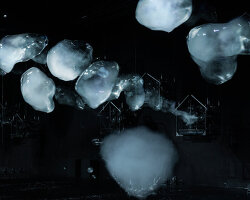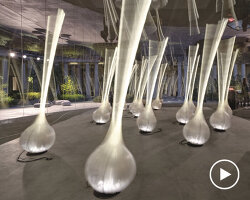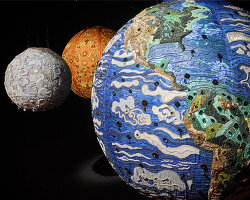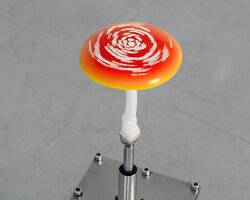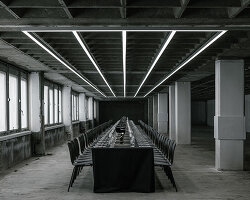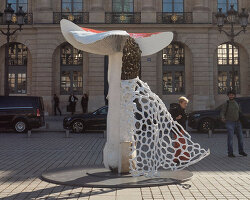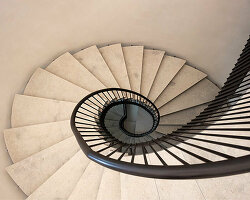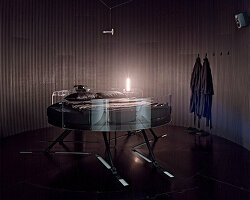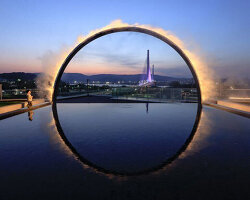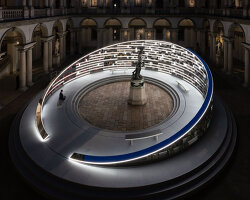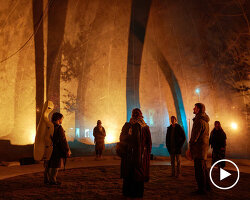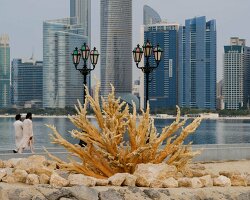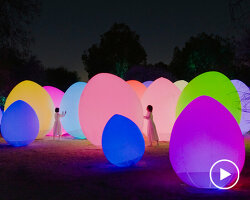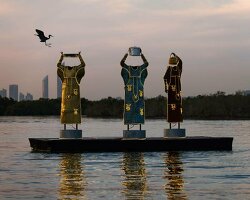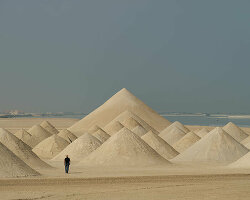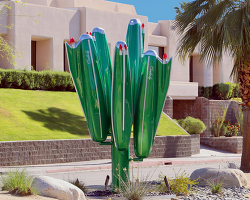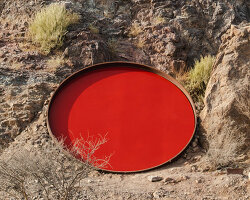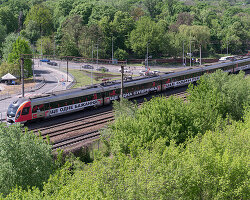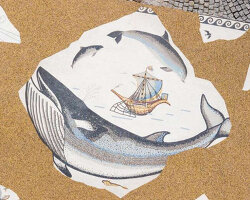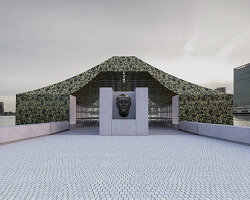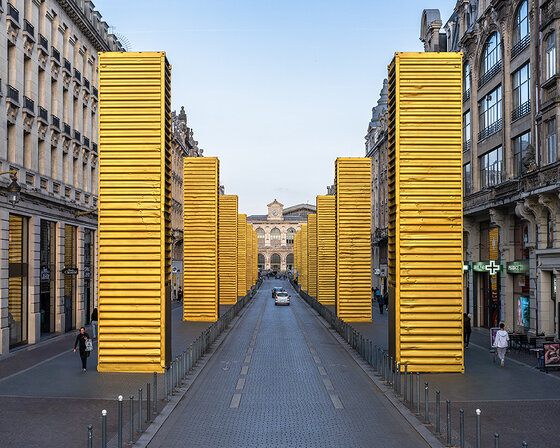carsten höller at manar abu dhabi
At the 2023 edition of the Manar Abu Dhabi festival, conceptual artist Carsten Höller unveils his latest public light art exhibit, titled Abu Dhabi Dots. As the second installment in the artist’s Dots series, the immersive installation takes center stage at the beach, where 20 spotlights in vibrant colors, follow the movements of the participants and allow them to play a ‘reward and punishment’ game with each other. In this game, initially comprising 14 red, three blue, two green, and one white dot, players have the freedom to ‘upgrade’ their assigned color. Red dots can progress to blue by overlapping with a blue dot, followed by advancement to green and then white. Overlapping causes others to be downgraded by one color step. If all red dots form an unbroken chain, all 20 dots become white. The game continues until seven or more white dots no longer overlap, signaling the end, and the dots reset to their initial configuration.
designboom had the opportunity to see the luminous Abu Dhabi Dots up close, play the interactive game, and talk to Carsten Höller. To learn more about the mesmerizing installation and its underlying significance, read the full interview below.
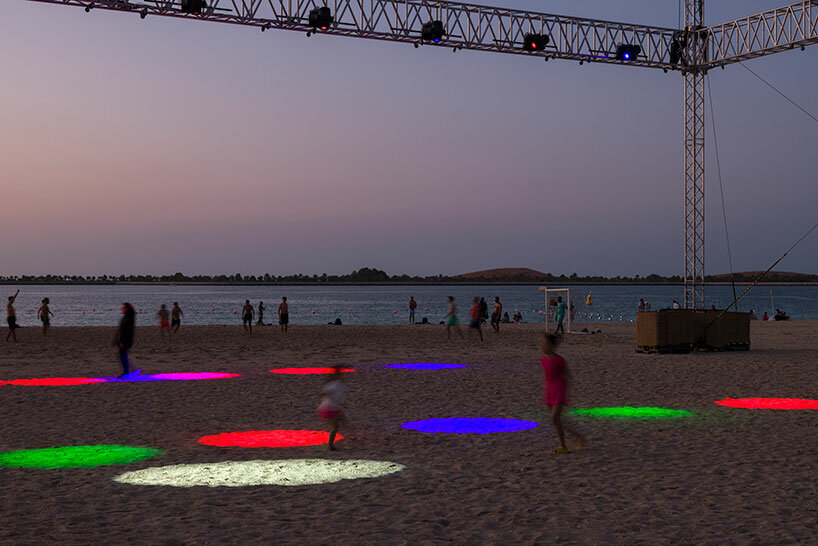
20 spotlights in vibrant colors follow the movements of the participants | image © Lance Gerber
interview with Carsten höller
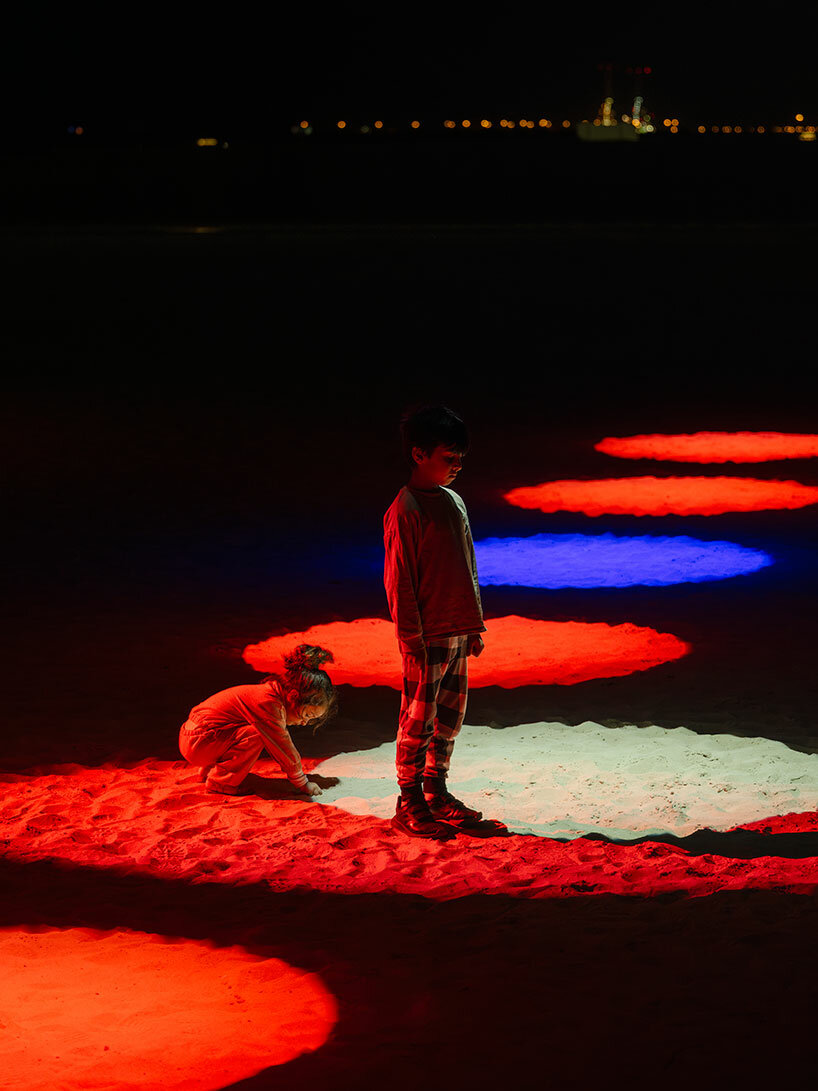
red, blue, white and green dots illuminate the beach | image © Lance Gerber
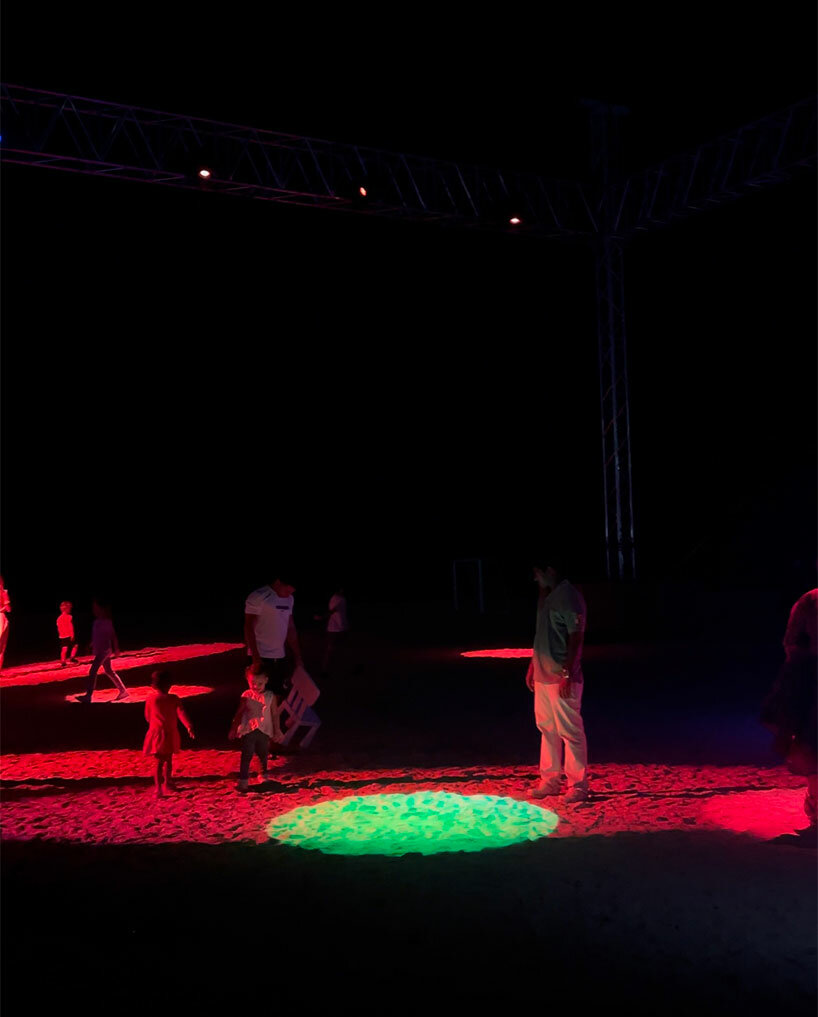
both adults and kids participate in the immersive installation | image © designboom
We also need to be mindful of the evolving dynamics in the art world, which has transitioned from a specialist, insider world with few participants to a mainstream phenomenon. While this shift has its good and bad sides, I think simply producing more representational artwork isn’t the solution. We already have plenty. I believe it’s time to stop, think about our approach, and explore what we can do with the potential that is there. Endlessly creating more representations, collecting art, and building more museums doesn’t get us anywhere. I’ve always believed that artists should have the capacity for subversion and distortion, basically changing things, but mainly on the model scale. Even within the context of a museum, which is essentially a form of public art, we should view it as a beautiful space in a city where rules can be reconsidered and changed.
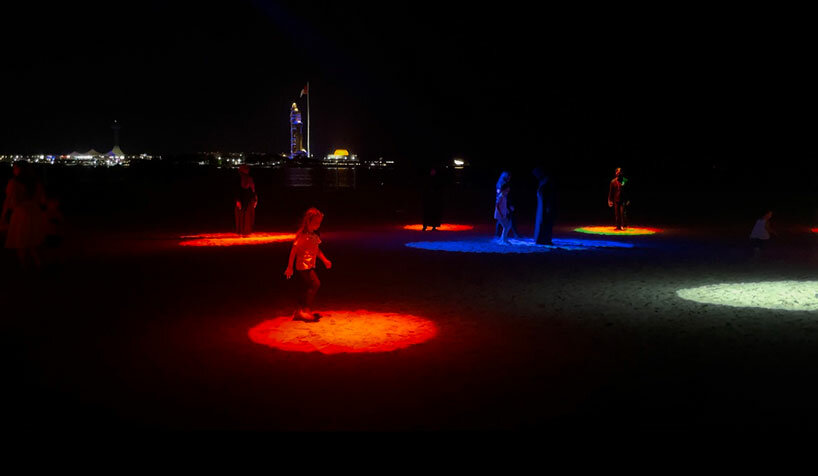
the light art piece allows participants to play a ‘reward and punishment’ game with each other | image © designboom
When I first started to become interested in art, I looked at a lot of things. I remember some of the best moments were when I encountered something I couldn’t fully understand, creating a sense of discomfort. It wasn’t just about understanding; it was about the missing piece that allowed me to project my thoughts onto the artwork. This made the experience much grander than it might have been. Art has its capacities, but they are not as extensive as I initially believed. As artists, I think we should focus on that.
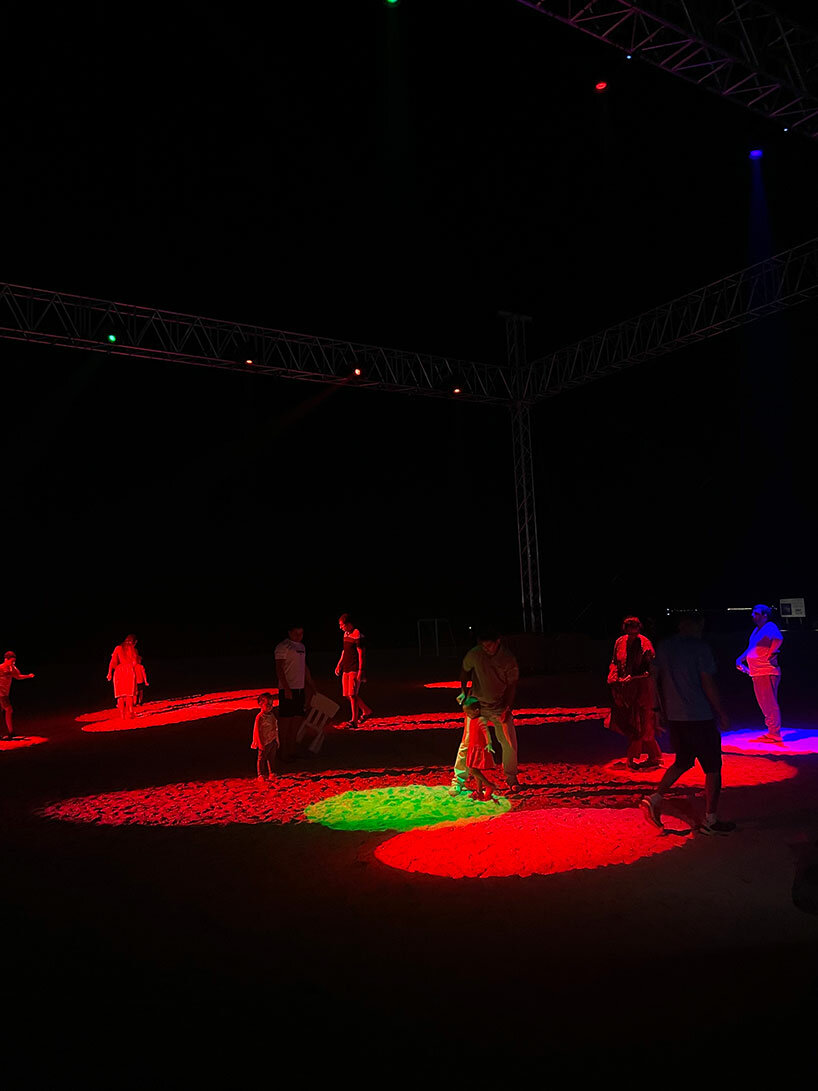
‘it’s like going to a discotheque where there’s no music,’ says Carsten Höller | image © designboom
We live in a very hierarchical kind of context, and there’s a lot of segregation within society. So this work, in some ways, does not propose to change everything but rather reflects on the situation by giving the possibility to be somebody else by changing a color, metaphorically speaking.
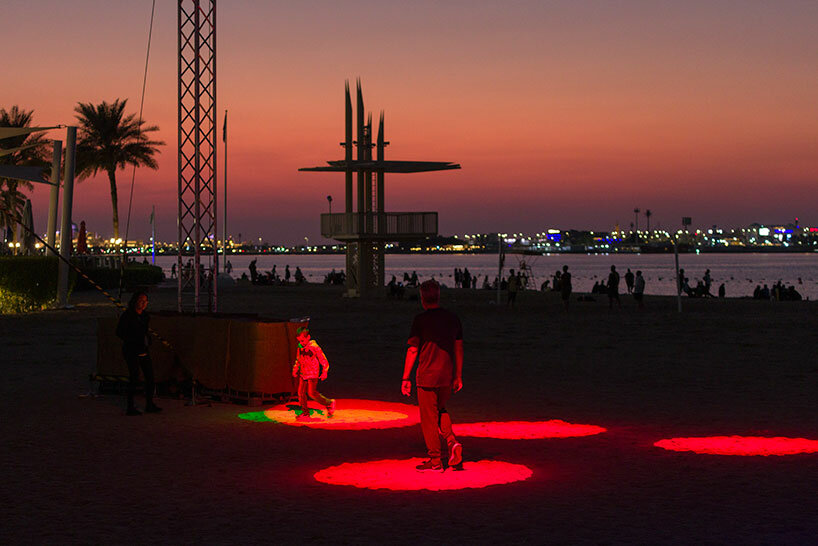
when all the red dots unite, everything becomes white | image © Lance Gerber
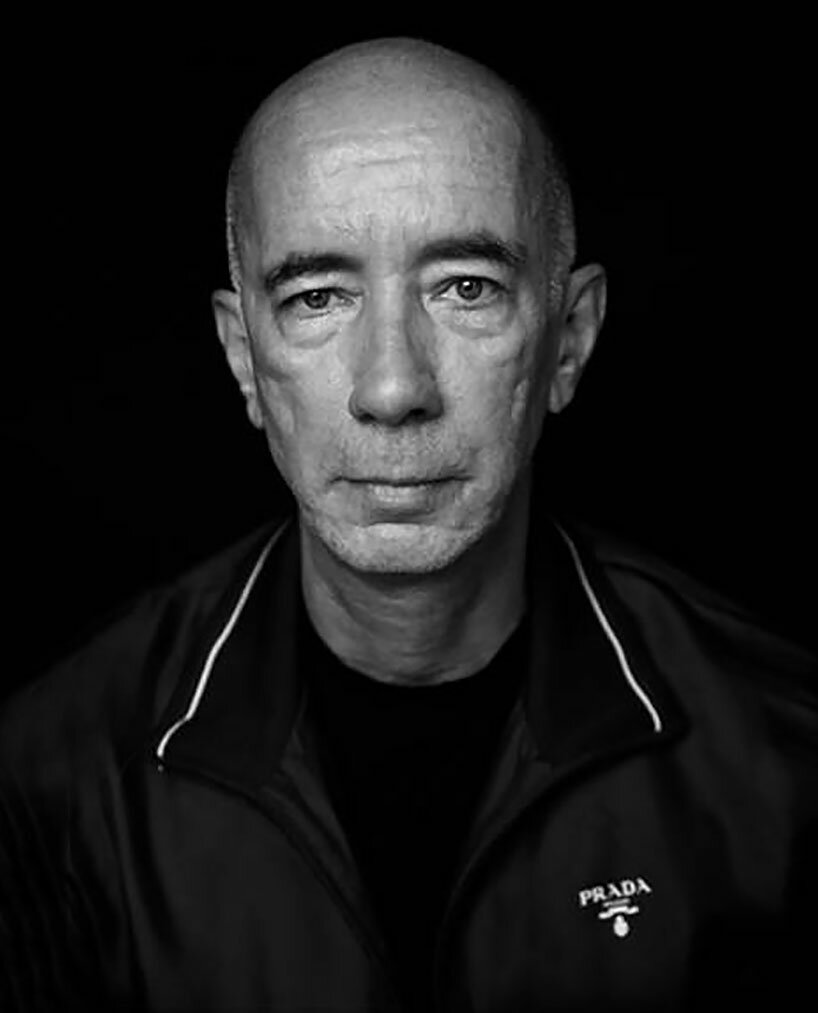
Carsten Höller portrait | image ©John Scarisbrick
artist: Carsten Höller
location: Abu Dhabi, United Arab Emirates
exhibition: Manar Abu Dhabi
photography: © Lance Gerber | @lance.gerber
happening now! partnering with antonio citterio, AXOR presents three bathroom concepts that are not merely places of function, but destinations in themselves — sanctuaries of style, context, and personal expression.
